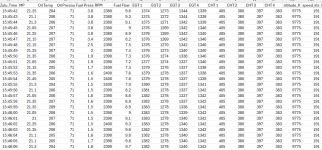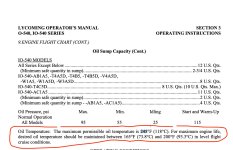dnickerson46
Member
This topic has been discussed many times. I have an Lycoming o-360 A1A in an RV-9A. The oil temperature runs a little hotter than I would like at 204 degrees, 9500 feet and 70% power, ROP. Is there a way to remove a section of the oil cooler inlet baffle to allow more airflow? If so, what would be the recommendation for how much to remove to lower the temp by 10 degrees?
I live in the Southeastern United States and the aircraft was built in the Northwest. I suspect the oil temps were fine in that part of the world.
I don't know if it makes a difference but I'm using 20W-50 weight oil which I'm going to replace with 100W at the next oil change.
The oil cooler has 7 cores and slanted so the left side is further out than the right side when looking at the engine.
Also, don't know if this is related but number cylinders #1 and #3 runs about 26 degrees hotter than the #2 and #4.
I live in the Southeastern United States and the aircraft was built in the Northwest. I suspect the oil temps were fine in that part of the world.
I don't know if it makes a difference but I'm using 20W-50 weight oil which I'm going to replace with 100W at the next oil change.
The oil cooler has 7 cores and slanted so the left side is further out than the right side when looking at the engine.
Also, don't know if this is related but number cylinders #1 and #3 runs about 26 degrees hotter than the #2 and #4.






